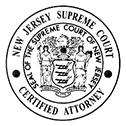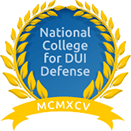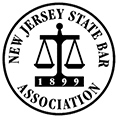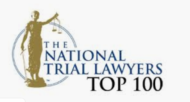NJ Case Law: Disclosing the Name of a CI
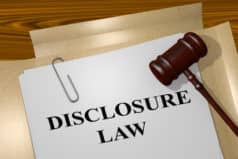
42 N.J. 377, 201 A.2d 39
Supreme Court of New Jersey.
The STATE of New Jersey, Plaintiff-Respondent, v. Fletcher BURNETT, Defendant-Appellant.
No. A-74.
Argued March 2, 1964.
Decided June 1, 1964.
The defendant was convicted in Essex County Court of unlawful possession of lottery slips and he appealed. The Superior Court, Appellate Division, 79 N.J.Super. 242, 191 A.2d 208, affirmed, and the defendant appealed. The Supreme Court, Weintraub, C.J., held that determination of whether the State should be obliged to reveal a confidential informant upon an inquiry into the validity of a search without a warrant rests with the judge who hears the motion to suppress, and he should not require disclosure unless he determines it is necessary in order to pass upon probable cause. [More information concerning this subject may be found at NJ Confidential Informant Disclosure]
Judgment affirmed.
*379 **40 Clive S. Cummis, Newark, for appellant (Schiff, Cummis & Kent, Newark, attorneys).Peter Murray, Asst. Pros., for respondent (Brendan T. Byrne, Essex County, Pros., attorney).
The opinion of the court was delivered by
WEINTRAUB, C.J.
The defendant was convicted of possession of lottery slips in violation of N.J.S. 2A:121-3, N.J.S.A. The Appellate Division affirmed, 79 N.J.Super. 242, 191 A.2d 208 (1963), and the defendant appealed, asserting a constitutional question with respect to a search made without a search warrant. R.R. 1:2-1(a).
The arresting officers were told by a known confidential informant that in 10 or 15 minutes a blue Mercury of a given age driven by a colored male would enter a specified parking lot and that the driver would leave with lottery slips on him. The ensuing events squared with this information, and as the car was backed out of the lot some five minutes after it entered, the driver, the defendant here, was arrested. Lottery slips were found upon his person. The trial court found probable cause for the arrest and the incidental search, citing Draper v. the United States, 358 U.S. 307, 79 S.Ct. 329, 3 L.Ed.2d 327 (1959).
The sole issue tendered on appeal was whether the State was obliged to reveal the confidential informant upon the inquiry into the validity of the search. The Appellate Division said it inclined to the view that disclosure would not be required but did not decide the question because it was not raised. The court held that to raise the issue a defendant must demand disclosure and move to strike the related testimony if the disclosure is not made. 79 N.J.Super., at p. 248, 191 A.2d 208. *380 This the defendant did not do, and hence the state was never given the choice between disclosure and the loss of the officer’s testimony. The Appellate Division’s view that the issue must thus be tendered is well supported. 8 Wigmore, Evidence (McNaughton rev. 1961) s 2374, p. 771; Annotation, 76 A.L.R.2d 262, 302 (1961).
**41 I.
Although the judgment of the Appellate Division must be affirmed for the reason it gave, we will deal with the issue it left open, i.e., the right to disclosure, since the issue is so much involved in the current scene.
N.J.S. 2A:84A-28, N.J.S.A. provides:
‘A witness has a privilege to refuse to disclose the identity of a person who has furnished information purporting to disclose a violation of a provision of the laws of this State or of the United States to a representative of the State or the United States or a governmental division thereof, charged with the duty of enforcing that provision, and evidence thereof is inadmissible unless the judge finds that (a) the identity of the person furnishing the information has already been otherwise disclosed or (b) disclosure of his identity is essential to assure a fair determination of the issues.’
This statute codified existing case law and reflects the holding in Roviaro v. the United States, 353 U.S. 53, 77 S.Ct. 623, 1 L.Ed.2d 639 (1957).
In Roviaro the defendant sought disclosure of the identity of the informant in connection with the issue of guilt rather than, as here, in connection with a motion to suppress the production of a search. Roviaro held that an informant must be revealed upon pain of dismissal if it appears he is a material witness upon a basic issue of the trial. See State v. Dolce, 41 N.J. 422, 435-436, 197 A.2d 185 (1964).
In the case before us, however, it is not suggested that the informant could exculpate the defendant. Indeed, guilt is not questioned. Rather defendant seeks to suppress evidence which establishes guilt and seeks to do so upon the thesis that if disclosure as to the alleged informant were required, *381 it might develop that the arresting officers did not have the probable cause for arrest which they asserted in their testimony, in which eventuality the search would be illegal and the resulting evidence inadmissible under Mapp v. Ohio, 367 U.S. 643, 81 S.Ct. 1684, 6 L.Ed.2d 1081 (1961).
But although in Roviaro disclosure was sought with reference to the ultimate issue of guilt, rather than the use of the product of a search, the Court, after saying that ‘Where the disclosure of an informer’s identity, or of the contents of his communication, is relevant and helpful to the defense of an accused or is essential to a fair determination of a cause, the privilege must give way,’ added (353 U.S., at p. 61, 77 S.Ct. at p. 628, 1 L.Ed.2d at p. 645):
‘* * * Most of the federal cases involving this limitation on the scope of the informer’s privilege have arisen where the legality of a search without a warrant is in issue and the communications of an informer are claimed to establish probable cause. In these cases, the Government has been required to disclose the identity of the informant unless there was sufficient evidence apart from his confidential communication.’
The federal cases disagree as to whether such disclosure must be made. Roviaro cited four cases in connection with the excerpt we have quoted. One was Scher v. United States, 305 U.S. 251, 59 S.Ct. 174, 83 L.Ed. 151 (1938). There the informant advised that about midnight a specific car would move liquor from a specific dwelling. The officers observed movements that coincided with that information but which, absent the informant’s tip, would not seem sufficient to establish probable cause. Nonetheless, the informant was not revealed and the search was upheld. Scher may then stand for the proposition that the informant need be disclosed only if the officer relied solely upon him, i.e., if there were no ensuing events giving credit to the informant’s communication.
The second case cited in Roviaro is **42 United States v. Li Fat Tong, 152 F.2d 650 (2 Cir. 1945). There the informant advised the officer that the defendant was arriving by plane with *382 narcotics. The officer knew of prior arrests of the defendant for allied offenses. The trial court’s refusal to require disclosure of the informant was sustained.
In the third case, Wilson v. United States, 59 F.2d 390 (3 Cir. 1932), the quarters of a private club were searched. The search was not under a warrant or in connection with an arrest. We gather the Government sought to sustain the search on the claim that a member of the club authorized the entry, the officer asserting that he used a key supplied by a member. The majority held that disclosure of the ‘member’ must be made since, if he was not a member of the club, the entry was without permission, the sole basis upon which it was sought to be sustained.
The last case cited in Roviaro is United States v. Keown, 19 F.Supp. 639 (W.D.Ky.1937). That case does support the thesis that the informant should be disclosed to the end that the defendant may attempt to dispute the truth of the officer’s testimony. To the same effect are the United States v. Blich, 45 F.2d 627 (D.Wyo.1930), and Costello v. the United States, 298 F.2d 99 (9 Cir. 1962); see Jones v. the United States, 105 U.S.App.D.C. 326, 266 F.2d 924 (D.C.Cir. 1959), appeal dismissed 106 U.S.App.D.C. 228, 271 F.2d 494 (D.C.Cir. 1959). On the other hand, a number of federal cases have held that it was not error to refuse to require disclosure. Bruner v. the United States, 293 F.2d 621 (5 Cir. 1961); Pegram v. the United States, 267 F.2d 781 (6 Cir. 1959); the United States v. One 1957 Ford Ranchero Pickup Truck, 265 F.2d 21 (10 Cir. 1959); Nichols v. the United States, 176 F.2d 431 (8 Cir. 1949); McInes v. the United States, 62 F.2d 180 (9 Cir. 1932); Goetz v. the United States, 39 F.2d 903 (5 Cir. 1930); Mitrovich v. the United States, 15 F.2d 163 (9 Cir. 1926).
There are not many state decisions in this area. A majority of them hold against a firm right to disclosure. The leading case requiring disclosure is Priestly v. Superior Court, 50 Cal.2d 812, 330 P.2d 39 (Sup.Ct.1958), decided by a vote of 4 to 3. To the same effect is*383 Ford v. City of Jackson, 153 Miss. 616, 121 So. 278 (Sup.Ct.1929). Tennessee had held the same way in Smith v. State, 169 Tenn. 633, 90 S.W.2d 523 (Sup.Ct.1936), but that case was disapproved in Simmons v. State, 198 Tenn. 587, 281 S.W.2d 487 (Sup.Ct.1955), which commits the matter to the discretion of the trial court, as do also the Missouri cases, State v. Edwards, 317 S.W.2d 441 (Sup.Ct.1958), and State v. Cookson, 361 S.W.2d 683 (Sup.Ct.1962). We read Drouin v. State, 222 Md. 271, 160 A.2d 85, 92 (Ct.App.1960), to eschew an invariable requirement of disclosure. By a vote of 4 to 3 the Supreme Court of Illinois held that disclosure should not be required. People v. Durr, 28 Ill.2d 308, 192 N.E.2d 379 (Sup.Ct.1963). The Ohio Supreme Court has held against disclosure, State v. Beck, 175 Ohio St. 73, 191 N.E.2d 825 (1963), cert. granted, 376 U.S. 905, 84 S.Ct. 664, 11 L.Ed.2d 604 (1964), and so also has the New York Court of Appeals (one judge dissenting), at least where there is ‘strong and dependable proof of the accuracy of his (the informer’s) information.’ People v. Coffey, 12 N.Y.2d 443, 240 N.Y.S.2d 721, 191 N.E.2d 263, 267 (Ct.App.1963). Also arrayed against disclosure are Dixon v. State, 39 Ala.App. 575, 105 So.2d 354 (Ct.App.1958); State v. Hardy, 114 So.2d 344 (Fla.D.Ct.App.1959); Bridges v. State, 166 Tex.Cr.R. 556, 316 S.W.2d 757 (Tex.Cr.App.1958).
Recently the United States Supreme Court decided Rugendorf v. the United States, 84 S.Ct. 825 (March 30, 1964). There a search warrant had issued. In an attack upon the warrant, defendant sought unsuccessfully to obtain the identity of the informant whose information figured prominently in the narration of probable cause. The majority opinion noted that with respect to an attack upon a warrant, ‘This Court has never passed directly on the **43extent to which a court may permit such examination when the search warrant is valid on its face and when the allegations of the underlying affidavit establish ‘probable cause,“ but on the assumption that the inquiry was permissible, the majority accepted the issue as tendered and found that probable cause was shown. In this *384 connection the majority rejected the defendant’s claim that the identity of the informant should have been revealed upon his demand. In doing so the majority did not refer to Roviaro from which we quoted above the passage suggesting the Government is required to reveal an informant when the search is made Without a warrant. The majority referred to Roviaro only in rejecting the further claim that disclosure was also needed to aid the defendant upon the ultimate issue of guilt. The four dissenting justices concluded that disclosure should have been ordered to aid a defense on the merits, but made no reference to the majority holding with respect to disclosure upon the issue of probable cause to search.
We are not sure of the full implication of Rugendorf upon the right to the disclosure on a challenge to a search. The majority opinion may rest upon the thesis that the defendant sought disclosure for specific reasons which were inadequate and hence he might have fared better if, for example, he had questioned the statement of the officer-affiant that an informant existed. The majority opinion may, however, mean that, whatever the rule is in the case of a search without a warrant, there should not be a disclosure of the informant when the search is under a warrant. In this connection, we note that although in Priestly, supra, 51 Cal.2d 812, 330 P.2d 39, the Supreme Court of California held, 4 to 3, that the informer must be disclosed, later it decided unanimously that disclosure should not be required if there was a search warrant. People v. Keener, 55 Cal.2d 714, 12 Cal. Rptr. 859, 361 P.2d 587 (1961). The court said Priestly was calculated to encourage officers to seek a search warrant and ought not to be applied where the officer did follow that course.
The foregoing survey reflects the diverse views upon this difficult subject. We are satisfied that there is no federal expression settling the issue in constitutional terms. More specifically, the quoted excerpt from Roviaro has not been thought to state a view of the Fourth Amendment binding upon us under Mapp v. Ohio, supra, 367 U.S. 643, 81 S.Ct. 1684, 6 L.Ed.2d 1081. Rather we read Roviaro to hold that *385 the contending interests admit of no absolute rule but rather call for a balancing process in which an apparent need may have to yield to a greater one. In the words of Roviaro (353 U.S., at p. 62, 77 S.Ct. at p. 628, 1 L.Ed.2d, at p. 646):
‘We believe that no fixed rule with respect to disclosure is justifiable. The problem is one that calls for balancing the public interest in protecting the flow of information against the individual’s right to prepare his defense. Whether a proper balance renders non-disclosure erroneous must depend on the particular circumstances of each case, taking into consideration the crime charged, the possible defenses, the possible significance of the informer’s testimony, and other relevant factors.’
II.
If a defendant may insist upon disclosure of the informant in order to test the truth of the officer’s statement that there is an informant or as to what the informant related or as to the informant’s reliability, we can be sure that every defendant will demand disclosure. He has nothing to lose and the prize may be the suppression of damaging evidence if the State cannot afford to reveal its source, as is so often the case. And since there is no way to test the good faith of a defendant who presses the demand, we must assume the routine demand would have to be routinely granted. The result would be that the State could use the informant’s information **44 only as a lead and could search only if it could gather adequate evidence of probable cause apart from the informant’s data. Perhaps that approach would sharpen investigatory techniques, but we doubt that there would be enough talent and time to cope with crime upon that basis. Rather we accept the premise that the informer is a vital part of society’s defensive arsenal. The basic rule protecting his identity rests upon that belief.
If, as Roviaro holds, the identity of the informer must be revealed when needed for the trial of the issue of guilt, and if also the identity must be revealed in connection with a challenge as to the probable cause, it would seem that not much would remain of the informer privilege in criminal causes. *386 These exceptions would just about exhaust the whole and relegate the privilege to collateral areas. Of course, if fairness requires that the privilege have no greater sway, the answer is obvious enough, but in considering what fairness truly demands, it is well to have in mind that we are dealing with the body of the privilege and not some minor exception to it.
We must remember also that we are not dealing with the trial of the criminal charge itself. There the need for a truthful verdict outweighs society’s need for the informer privilege. Here, however, the accused seeks to avoid the truth. The very purpose of a motion to suppress is to escape the inculpatory thrust of evidence in hand, not because its probative force is diluted in the least by the mode of seizure, but rather as a sanction to compel enforcement officers to respect the constitutional security of all of us under the Fourth Amendment. State v. Smith, 37 N.J. 481, 486, 181 A.2d 761 (1962). If the motion to suppress is denied, the defendant will still be judged upon the unvarnished truth.
We must assay the fairness of non-disclosure in the context in which it arises-here probable cause. Probable cause is said to be a reasonable basis for the ‘belief’ that a crime has been or is being committed. The quality of that belief is not precisely defined in our cases. We know it is something more than a raw suspicion but something less than a finding of guilt. Discussions usually turn to the opinion of Mr. Justice Rutledge in Brinegar v. the United States, 338 U.S. 160, 173, 69 S.Ct. 1302, 1309, 93 L.Ed. 1879, 1889 (1949), wherein contrasting probable cause with the guilt he said:
‘* * * There is a large difference between the two things to be proved, as well as between the tribunals which determine them, and therefore a like difference in the Quanta and modes of proof required to establish them.’
The opinion continues (338 U.S., at p. 175, 69 S.Ct. at p. 1310, 93 L.Ed., at p. 1890):
*387 ‘In dealing with probable cause, however, as the very name implies, we deal with probabilities. These are not technical; they are the factual and practical considerations of everyday life on which reasonable and prudent men, not legal technicians, act. The standard of proof is accordingly correlative to what must be proved.
‘The substance of all the definitions’ of probable cause ‘is a reasonable ground for belief of guilt.’ McCarthy v. De Armit, 99 Pa. 63, 69, quoted with approval in the Carroll opinion. 267 U.S. at 161, 45 S.Ct. 280, 69 L.Ed. 554, 39 A.L.R. 790. And this ‘means less than evidence which would justify condemnation’ or conviction, as Marshall, Ch. J., said for the Court more than a century ago in Locke v. the United States, 7 Cranch (U.S.) 339, 348, 3 L.Ed. 364, 367. Since Marshall’s time, at any rate, it has come to mean more than bare suspicion: Probable cause exists where ‘the facts and circumstances within their (the officers’) knowledge, and of which they had reasonably trustworthy information, **45 (are) sufficient in themselves to warrant a man of reasonable caution in the belief that’ an offense has been or is being committed. Carroll v. the United States, 267 U.S. 132, 162, 45 S.Ct. 280, 288, 69 L.Ed. 543, 555, 39 A.L.R. 790.’
In footnote 14 the opinion elaborates upon the reference to Chief Justice Marshall:
‘Marshall’s full statement in Locke v. the United States was: ‘It may be added, that the term ‘probable cause,’ according to its usual acceptation, means less than evidence which would justify condemnation; and, in all cases of seizure, has a fixed and well-known meaning. It imports a seizure made under circumstances which warrant suspicion.’ 7 Cranch (U.S.) 339, 348, 3 L.Ed. 364 (367).’
Probable cause then is something sufficient to engender a belief somewhere between a bare suspicion and a conviction of guilt. We take it that Chief Justice Marshall’s word ‘suspicion’ would be acceptable if qualified by ‘well-grounded.’ Further, the issue is not whether the information which reached the officer was true or false but only whether the officer was reasonable in accepting the information as true. And in reaching his ‘belief’ the officer is not limited to evidence admissible in the courtroom. For example, hearsay will do if coupled with something to give it credit, and evidence deemed too dangerous at trial, i.e., prior arrests and convictions, may be accorded probative effect. See State v. Burrachio, 39 N.J. 272, 275, 188 A.2d 401 (1963). Finally, we note that *388 the Constitution authorizes an Ex parte decision upon an application for a search warrant, with, as yet, unclear limits upon what may be disputed upon a motion to suppress.
The question then is whether in view of all of these circumstances it is reasonable and consistent with the purpose and the effective enforcement of the Fourth Amendment to deny disclosure of the informer upon a challenge to the existence of probable cause. We think the public can be accorded the benefit of the informer privilege without a significant dilution of the Fourth Amendment.
The Fourth Amendment is served if a judicial mind passes upon the existence of probable cause. Where the issue is submitted upon an application for a warrant, the magistrate is trusted to evaluate the credibility of the affiant in an Ex parte proceeding. As we have said, the magistrate is concerned, not with whether the informant lied, but with whether the affiant is truthful in his recitation of what he was told. If the magistrate doubts the credibility of the affiant, he may require that the informant be identified or even produced. It seems to us that the same approach is equally sufficient where the search was without a warrant, that is to say, that it should rest entirely with the judge who hears the motion to suppress to decide whether he needs such disclosure as to the informant in order to decide whether the officer is a believable witness.
As Roviaro states, the problem is one of striking a balance between contending values. The public needs the informer privilege and it needs also the security of the Fourth Amendment. The procedure we have outlined reasonably protects the public’s interest in both. And as to the accused in that rare unknowable situation in which the procedure should fail of its mark, he will have to meet nothing more nor worse than the truth.
We have weighed the possible distinction mentioned above and drawn in Keener, supra, 55 Cal.2d 714, 12 Cal. Rptr. 859, 361 P.2d 587, between a warrant and no-warrant cases. No doubt it is good to encourage applications for search warrants, but we feel the distinction would lead also to an inquiry *389 as to whether the officer had time to seek a warrant and thereby complicate a troublesome area with an additional problem. We appreciate too that after the **46 event an officer may feel pressed to claim to have known more than when he seeks a warrant in advance of the search, but this is merely a circumstance which the judicial mind may weigh in deciding whether it can pass upon probable cause without the disclosure of the informant.
The judgment is affirmed for the reason given by the Appellate Division.
For affirmance: Chief Justice WEINTRAUB and Justices JACOBS, PROCTOR, HALL, SCHETTINO and HANEMAN-6.
For reversal: None.



